► Baby Aston drop-top tested
► 503bhp twin-turbo V8
► Priced from £126,950
Even by the standards of 2020, it’s been an eventful few months at Aston Martin. Major accounting errors, departing CEOs and dipping share prices have taken their toll, yet – on the surface at least – things now appear to be looking up. New money and investment from Lawrence Stroll, as well as a formidable CEO in the shape of Tobias Moers mean Aston is finally on firmer ground, while the long-awaited DBX SUV has arrived to rave reviews.
It’s easy to forget then, that another new model is on the horizon – namely the Vantage Roadster. The smallest, sportiest and cheapest convertible Aston that you can buy, it aims to take customers away from the likes of Jaguar’s F-Type Convertible and, crucially, the Porsche 911 Cabriolet. No mean feat – especially in the case of the latter.
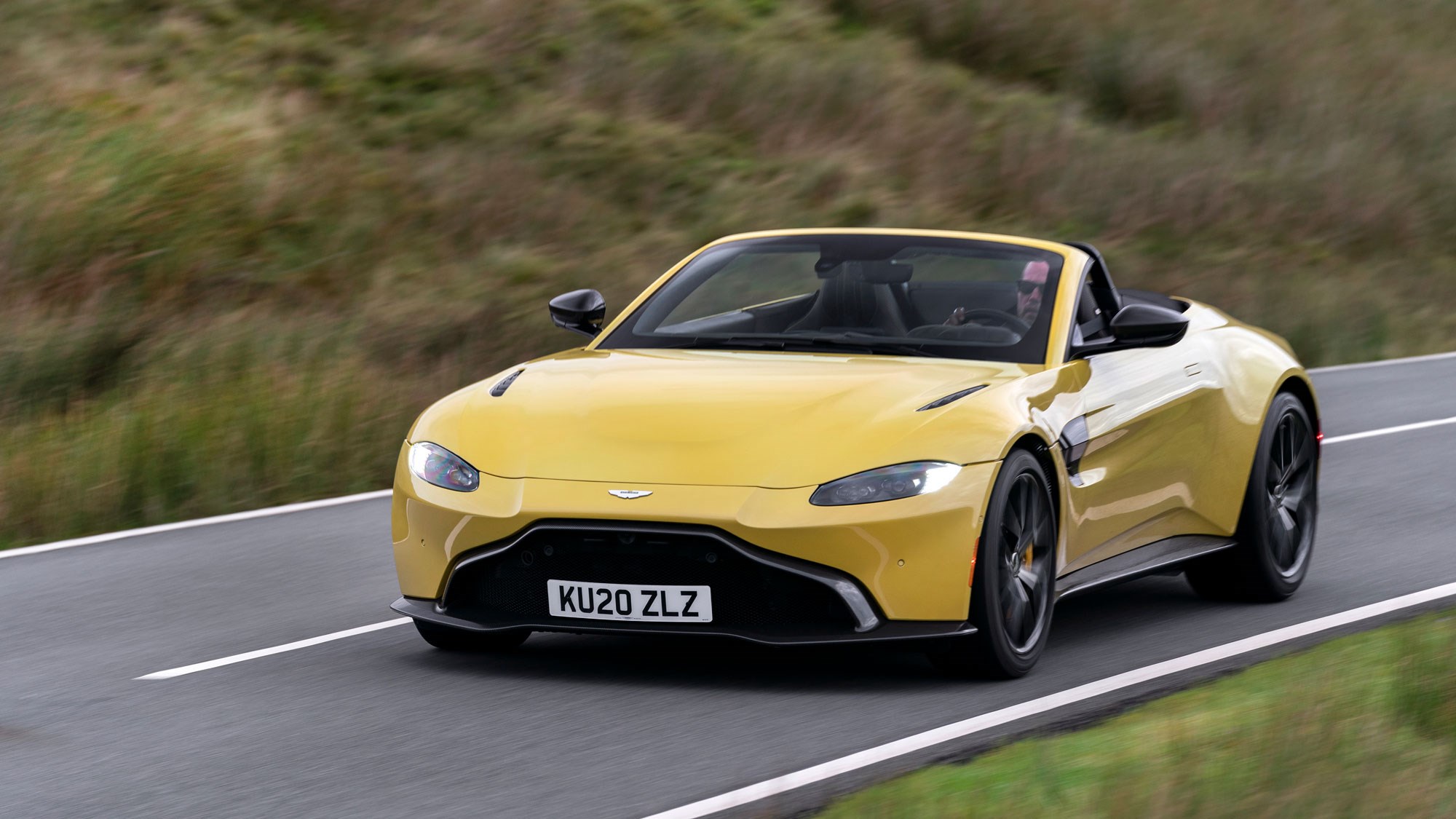
What’s new on the Vantage Roadster?
Styling tweaks are minimal and consist of a new commemorative grille and additional alloy wheel designs (also now available on the Vantage Coupe), while the drop-top roof itself is made from tailored fabric and can be specced in a number of different colours. Plus, lowering it takes less time (6.7 seconds) than the original V8 Vantage accelerated from 0-60mph – making it the fastest operating electric roof on the market.
And, because, there’s no heavy folding metal roof to haul around, the Vantage Roadster’s kerbweight increases by a mere 60kg. Travel on your own, and it tips the scales at less (1,628kg) than the Vantage Coupe with a passenger on board.
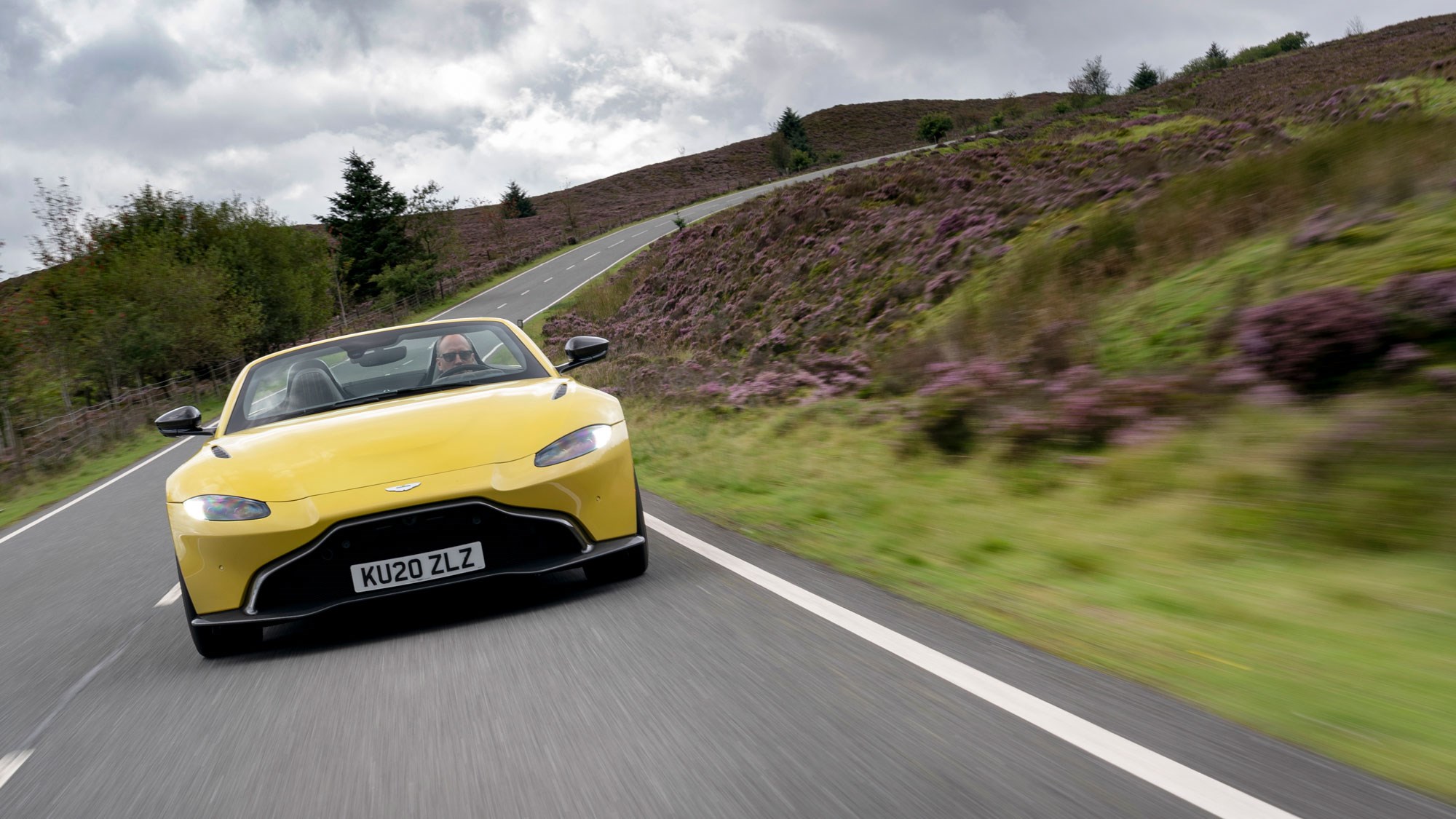
How does it drive?
We’re a fan of how the Vantage Coupe drives – fabulous agility and involving handling mixed with a powertrain far more exciting than what a 911 Carrera can offer. So the key, as always when making a drop-top version of a sports car, is to keep everything is consistent as possible. In order to do this, Matt Becker (Chief Engineer) and his team applied some mild tweaks to the Vantage Roadster’s chassis.
With the extra KGs knocking the weight distribution (previously a perfect 50:50) back a notch, the Roadster gets revalved dampers all-round, as well as increased rear anti-roll stiffness, new rear transmission mounts and a recalibrated EPAS (Electric Power Assisted Steering) that’s been designed to work with the revised chassis.
The result? Pretty damn impressive, with the difference to the Coupe almost imperceptible. The chassis feels taught and well damped, with a lovely poise and flow to its movements once you get used to the super-quick steering. As you’d expect, it’s not as feelsome as older hydraulic systems, yet there’s enough to let you know what’s going on, aided by the beautifully low-down driving position.
Lateral grip from the front end is still deeply impressive, while the oversteer biased chassis (perhaps even more so than the Coupe owing to that stiffened rear end) allows broad strokes of tyre burning tomfoolery if you so desire – aided and abetted by the standard fit E-Differential. If we were to be super fussy, the Roadster doesn’t quite feel as squat and ultimately planted on the road as the Coupe (the centre of gravity has moved upwards a touch), perhaps taking a touch more body lean under hard cornering, but it’s barely noticeable 95% of the time.
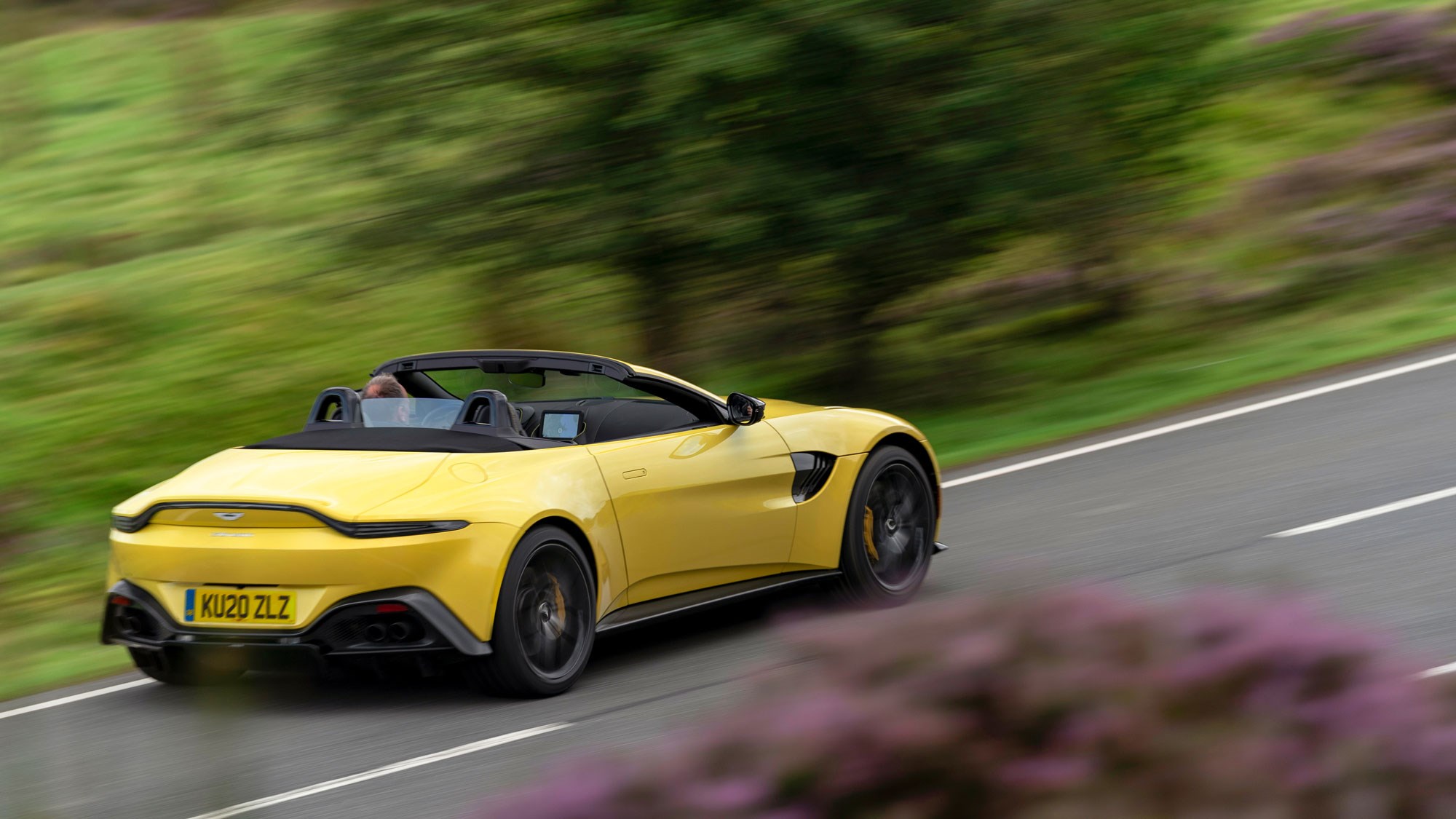
Has it still got a Mercedes-AMG engine?
Yes, but that’s really no bad thing. At all. The 4.0-litre twin-turbo V8 produces 503bhp and 505lb ft of torque, and while it doesn’t feel any quicker than a 911 Carrera 4S (0-60mph taking 3.7 seconds), the sound is leagues ahead. Regardless of gear and revs, the Vantage Roadster treats you to a full-on muscle car rumble with plentiful pops and gargles and an ear-splitting crack on upchanges. Even with the roof up, it delivers more noise than – not just a 911 – but the Vantage Coupe as well. No doubt, it feels like a proper occasion even with the driving modes set to the tamest of the three settings (Sport, Sport+ and Track).
One qualm we have with the drivetrain, however, is the 8-speed ZF automatic transmission. It’s by no means a deal-breaker, but the changes aren’t as crisp or instantaneous as those from a 911’s PDK box.
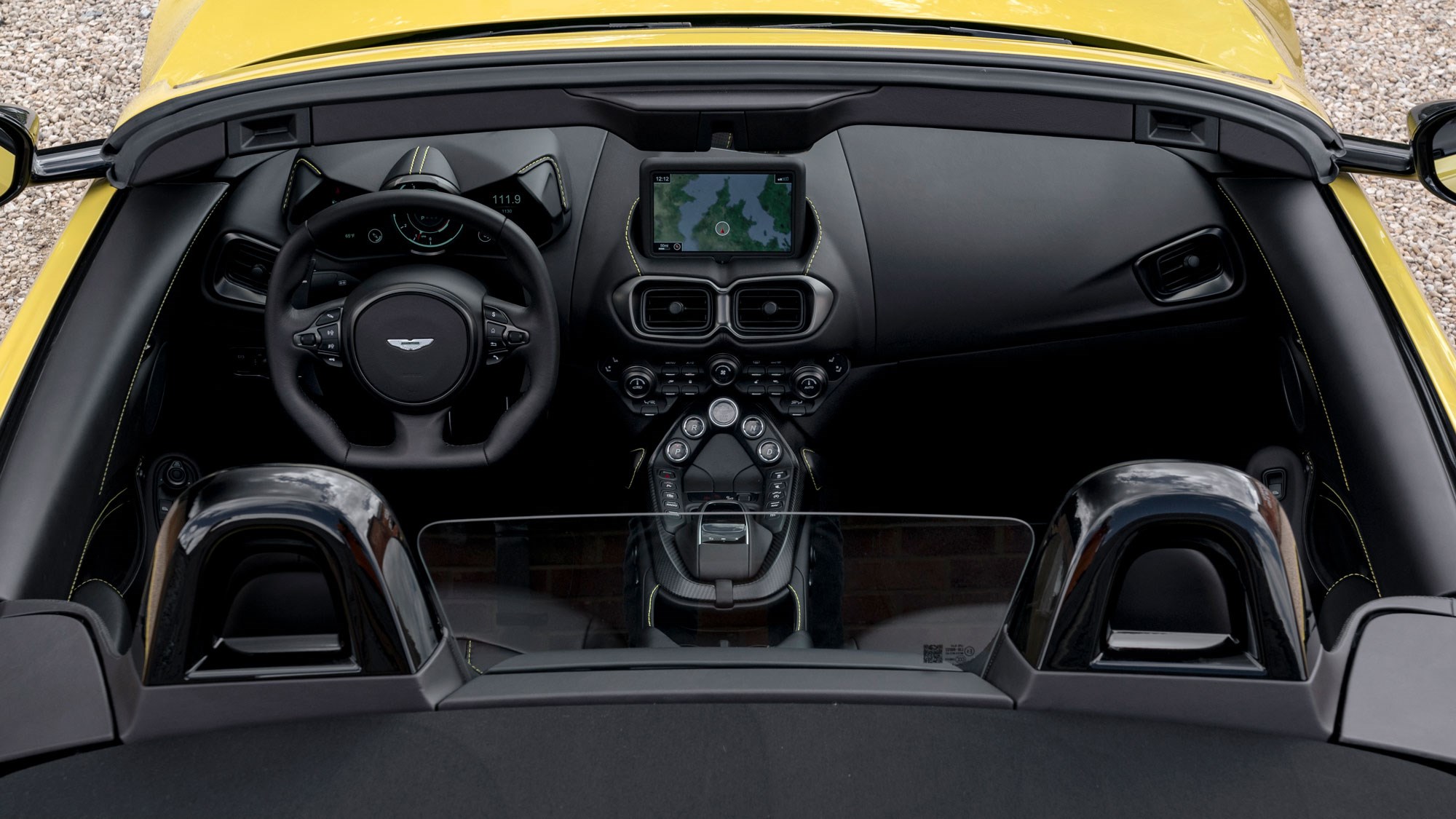
Is it a good cruiser?
For what it is, yes. With the soft-top roof, it’s easy to forget that this is still the sporty, baby Aston designed to take on a 911. And while it’s not a cossetting cruiser, there’s still an undoubtedly impressive coherence to the way the car is setup that means it’s far from being overly firm or uncomfortable. Sure, it’s a taught chassis, but it rides over all but the worst surfaces with minimal intrusion to the cabin. Road noise (with the roof up) is pronounced, but roughly on par with a 911 Cabriolet, although wind buffeting with the roof down could be improved.
Trouble is, once you do start to take things easy you’ll note the cabin layout is still a bit of a mess. Sure, the materials and stitching are wonderful, but the button-fest centre console, oddly positioned seat controls and outdated Mercedes infotainment system certainly grinds on a £130k car.
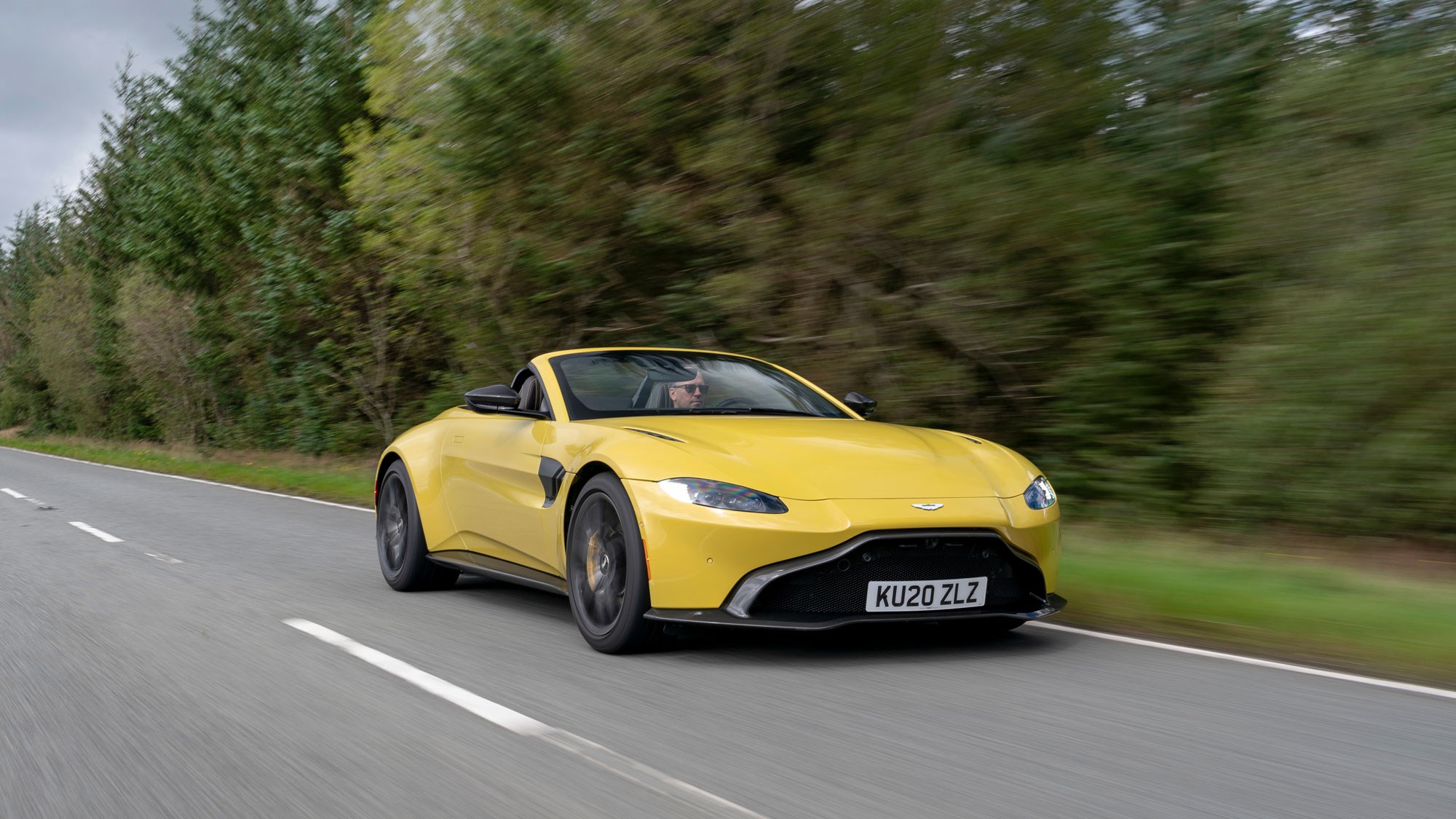
Verdict
Like the Coupe, the Vantage Roadster is not perfect. It has its flaws and will face the stiffest of competition from the likes of the Porsche 911 Cabriolet. And yet, to this road tester at least, the Aston Martin is one to go for. In removing the roof, the Vantage Roadster has been able to enhance the character and sense of occasion that worked so well in the Coupe, while adding an even greater sense of fun to the mix.